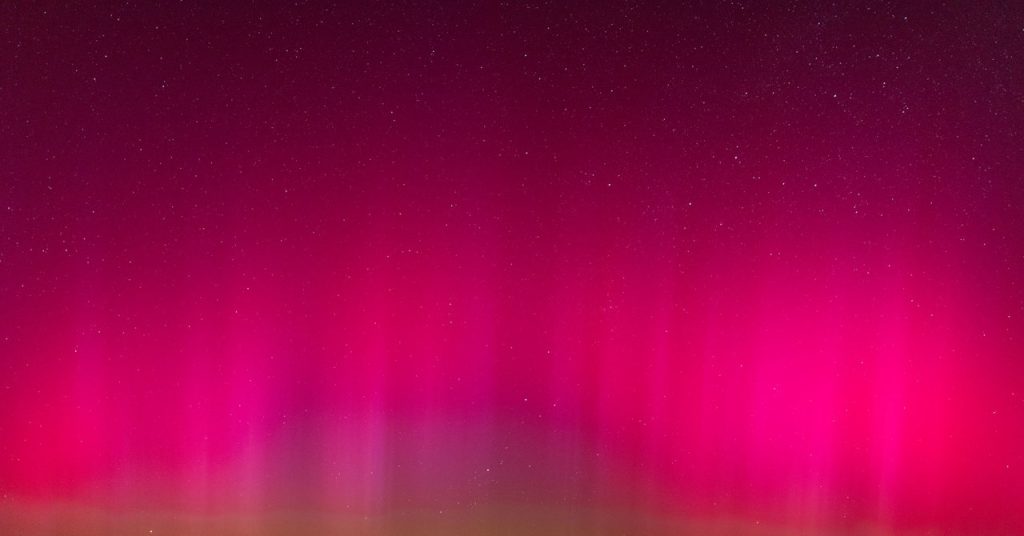Auroras Light Up the Skies
Mid-May Spectacle
Auroras filled much of the world’s skies for several nights in mid-May. On May 10, a series of Coronal Mass Ejections (CMEs) merged before hitting Earth’s atmosphere, creating a spectacular aurora display.

AR3664 on May 10, 2024. Photograph: NASA/SOHO
Active Region 3664
These CMEs were linked to Active Region 3664, a group of sunspots on the sun’s surface that grew over 15 times larger than Earth. This region is expected to remain active until July 2025, offering more opportunities to witness auroras at lower latitudes.
Future Aurora Predictions
As we approach the solar maximum, more CMEs are likely to produce stunning auroras, especially in higher latitudes like Alaska, Canada, and the Nordic countries. However, predicting the exact timing of auroras remains challenging.
Understanding Space Weather
Space Weather Prediction
The Space Weather Prediction Center (SWPC) tracks solar activity, but unlike terrestrial weather, space weather forecasting is more about monitoring and waiting. Scientists can only predict the impacts of a CME or solar flare after it occurs.
Impact on Earth
When a major CME is detected heading toward Earth, scientists predict its effects on power grids, GPS signals, and more. One key forecast for aurora enthusiasts is the Kp Index, which measures geomagnetic activity. The index ranges from Kp 0 to Kp 9, with higher values indicating more widespread auroras.
The Kp Index and Auroras
Geomagnetic Activity
Values of Kp 3 can produce vivid auroras in northern latitudes. Cities like Oslo, Reykjavik, and many in Canada can see auroras at Kp 5. Higher readings push auroras deeper into Europe, Asia, and North America.
Historical Data
The German Research Centre for Geosciences has tracked the Kp Index since January 1, 1932. Out of over 250,000 data points, the index has hit Kp 9 only 32 times. Three of these instances occurred during the May 10-11 geomagnetic storm, allowing millions to witness the event.
Past and Future Events
The last Kp 9 event before this year was during a solar storm in October 2003, which made auroras visible deep into Europe and the United States. As we approach the next solar maximum, keep an eye out for sunspots and a high Kp Index for another chance to see auroras at lower latitudes.

5 Comments
Spectacular auroras? Great, another reason to not sleep this summer!
Hope those clouds decide to take a vacation, too.
– Hope my camera is ready for the show tonight!
– Great, just what we needed, more light pollution…
Awesome! Can’t wait to see if it’s all hype.
– Better than fireworks, that’s for sure!
– Seriously, I wonder if the sky’s gonna catch on fire or what?
– Will it actually be visible this time, or just for those in the Arctic?
– Finally, something to make stargazing interesting this summer!
– We’ll see if these “spectacular” auroras are just an excuse for scientists to get some fresh air.